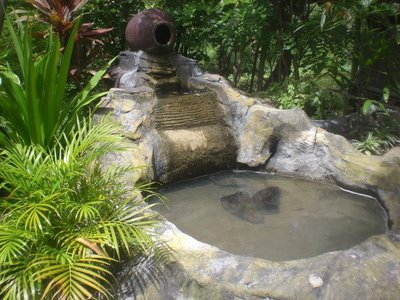* Scientific Name: Helostoma temminckii
* Family: Helostomatidae
* Origin: Java, Thailand
* Adult Size: 6-12 inches (15-30 cm)
* Social: Generally peaceful
* Lifespan: 5 years
* Tank Level: Top, Mid dweller
* Minimum Tank Size: 30 gallon
* Diet: Omnivore, eats most foods
* Breeding: Egglayer
* Care: Intermediate
Description:
The popular Kissing Gourami, or ‘Kisser’, originates from Thailand, where it is cultivated as a food fish. These days virtually all specimens sold in the USA are commercially bred in Florida. Two colors of this fish occur naturally; a pink or flesh colored form, and a silver-green form often referred to as the Green Kisser.
In the past these were believed to be the same species, but they have since been reclassified as two separate species. The green species, which has a dark bar bordering the dorsal and anal fins, is Helostoma temminckii, the name previously associated with the popular pink variety. The traditional pink Kissing Gourami is now classified as Helostoma rudolfi.
Their common name is derived from what appears to be kissing; however scientists still aren’t sure of the true purpose of the behavior. It’s believed to be a harmless challenging behavior, which generally occurs between two males. This conjecture is supported by the fact that aging seems to diminish the need to challenge one other. With age comes wisdom, or at least the ability to peacefully cohabit with others.
Both sexes of Kissing Gourami look almost identical; from their oval shape to their thick fleshy lips. What you can’t see are the rows of fine teeth on the inside surface of those lips, which are used to graze on algae and vegetable matter. Another unseen structure in these fish is the labyrinth organ, which is present in all labyrinth fishes.
This organ enables them to take oxygen from the air, thus permitting them to survive in waters with low oxygen levels. In fact, the gills of labyrinth fishes are usually not capable of obtaining enough oxygen from the water to survive. Therefore, they must satisfy some of their oxygen requirement by gulping air at the surface of the water. That is why it is essential to provide them with access to the water surface.
Habitat/Care:
In nature Kissers are usually found in slow moving heavily vegetated ponds or marshes. They are a hardy fish that will tolerate a range of water conditions. However, they need a lot of space, with access to the surface, warm water, and plenty of vegetation. Because they are fond of plant matter in their diet, use artificial plants or sturdy live plants such as Java fern or Java moss. Tender plants are likely to be eaten down to the stem.
Generally Kissers will get along with other species of fish, and can be kept in a community tank with medium to large size fish. However, some can be quarrelsome, so watch them closely for signs of aggression. In nature they grow to a size of a foot or more, but in captivity they generally remain about half that size. Even a small Kisser will grow too large for an aquarium of 20 gallons or less, and should not be kept in the popular mini-tanks.
Diet:
Kissers accept a variety of foods, including; flake, frozen, freeze-dried, and small live foods, such as Tubifex and Brine Shrimp. They also will accept any kind of vegetable matter, and should be provided with plenty of Spirulina-based foods, as well as fresh vegetables when possible.
Periodically providing fresh romaine lettuce, cooked zucchini or peas, will keep your Kissers in optimal health. Take care when providing fresh vegetables, as uneaten portions will quickly foul the water.
Breeding:
Potential breeders should be conditioned with live foods, and provided with a large tank with soft warm water (80 F). Unlike other Labyrinth fish, Kissers do not build elaborate bubble nests, although the male may blow bubbles randomly at the surface.
Spawning begins by circling, progressing to nudging and dancing, followed by intense beating of tails, and finally kissing. Eventually the male wraps his body around the female, turning her upside down. The female will release hundreds or even thousands of eggs, which are fertilized by the male as they rise to the surface.
If floating plants or lettuce are placed on the surface before spawning, the eggs will adhere to them and the fry can feast upon infusoria that grows on the vegetation. The parent fish should be removed following spawning, as they may eat their own young.
Eggs will hatch in approximately one day, and in another two days the fry will be free swimming. They can be fed very fine flake foods or small live foods such as freshly hatched brine shrimp
Wednesday, June 2, 2010
Subscribe to:
Post Comments (Atom)



No comments:
Post a Comment